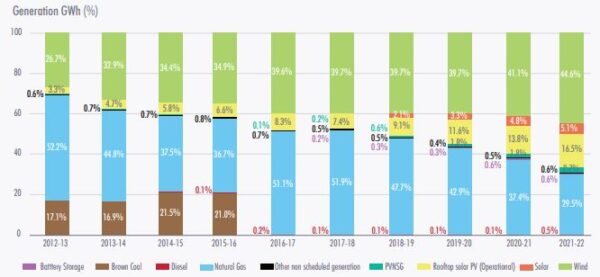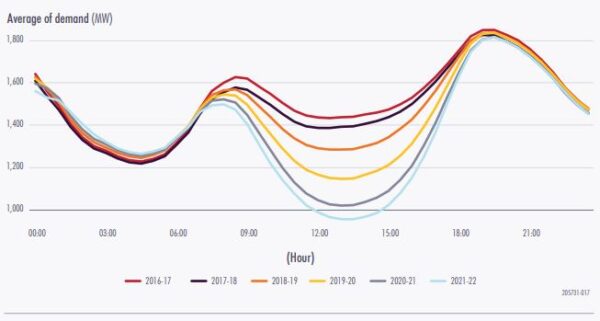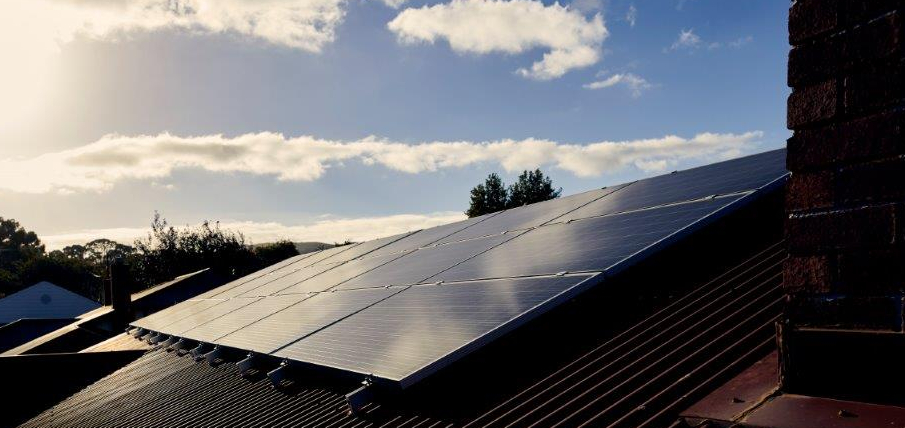South Australia (SA) is at the forefront of renewable energy innovation with wind and solar already generating almost 70% of the electricity in its grid but the state has now published an energy transition green paper to help it formulate a comprehensive medium-to-long term energy policy as it transitions to a net-zero emissions future.
“The electricity grid is changing from the traditional one-way system delivering electricity to homes and businesses, to a modern two-way system where people can now consume, generate, export and trade energy,” the SA Energy and Mining Department (EMD) said in a statement.
“As our energy system continues to change, there are challenges as well as opportunities that need to be identified and explored. The green paper released today explores the opportunities and challenges for the state’s energy transition across government, industry and community sectors.”
“It highlights the dramatic transformation to date of South Australia’s energy sector, from a coal and gas-reliant state at the turn of the century to one powered by more than 70% renewables.”
Among the priorities outlined in the green paper is identifying how best to maximise the opportunities and address the challenges associated with the increasing supply of electricity to the grid from rooftop solar.
South Australia has one of the highest per capita levels of rooftop PV anywhere in the world with more than 357,000 rooftop solar systems of up to 100 kW installed across the state, with a combined capacity of more than 2,700 MW.

Image: EMD
With more than one in three households with rooftop solar systems in South Australia (and increasing), rooftop solar is already the state’s largest generator, capable of providing more than 1 GW of energy under the right conditions. The Australian Energy Market Operator (AEMO) estimated that in 2021-2022 the annual rooftop solar generation was 2,269 GWh, or 17% of total annual underlying consumption.
While the South Australian government remains committed to supporting the uptake of rooftop PV, the green paper points out that the uptake of small-scale solar and other distributed energy resources (DER) has created a range of system security issues.
“DER technologies are playing a central role in transforming our power system, as this small-scale method of power generation or storage is rapidly becoming a major source of our energy,” the EMD said. “But our electricity grid was not designed to make the best use of these new and emerging technologies, and is now experiencing many new challenges, including frequency and voltage fluctuations, and minimum operational demand and system strength concerns.”

Image: EMD
South Australia has already introduced several new technical standards and requirements for smaller generating systems – including remote disconnection requirements and dynamic export control – but the state government said further work is required to continue to leverage these technologies for the benefit of all South Australians.
With AEMO forecasting the state’s variable renewable energy generation will reach 85% by 2025, South Australian Energy Minister Tom Koutsantonis said now “is an appropriate time to tease out some of the thorny issues still to be addressed, propose some options for further progress, and try to anticipate what lies ahead for our state.”
“There are undoubtedly short-term energy issues to be resolved in 2023 but this co-designed policy aims to look beyond the horizon to plan for the next steps,” he said.
The Energy Transition green paper will remain open for public consultation, until 14 August 2023. Feedback will be used to develop a white paper that will set lay out a pathway for the state to transition to a net-zero emissions future.
This content is protected by copyright and may not be reused. If you want to cooperate with us and would like to reuse some of our content, please contact: editors@pv-magazine.com.









By submitting this form you agree to pv magazine using your data for the purposes of publishing your comment.
Your personal data will only be disclosed or otherwise transmitted to third parties for the purposes of spam filtering or if this is necessary for technical maintenance of the website. Any other transfer to third parties will not take place unless this is justified on the basis of applicable data protection regulations or if pv magazine is legally obliged to do so.
You may revoke this consent at any time with effect for the future, in which case your personal data will be deleted immediately. Otherwise, your data will be deleted if pv magazine has processed your request or the purpose of data storage is fulfilled.
Further information on data privacy can be found in our Data Protection Policy.